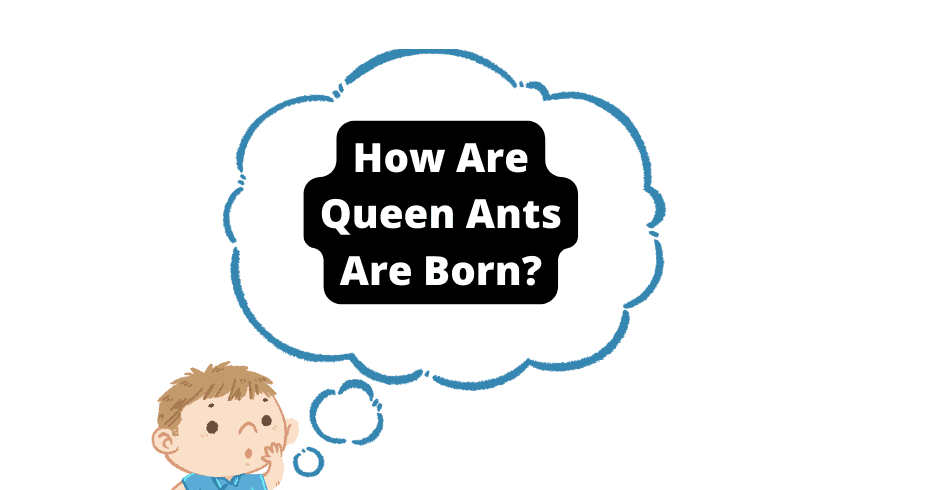Queen ants are born in a very specific way (due to some “weird” reasons) that differs from all other ants in the nest.
If you’re curious about the science behind it, or if you’re thinking of getting an ant farm, read on!
This article will answer some common questions about queen ants and provide some useful tips about ant farms.
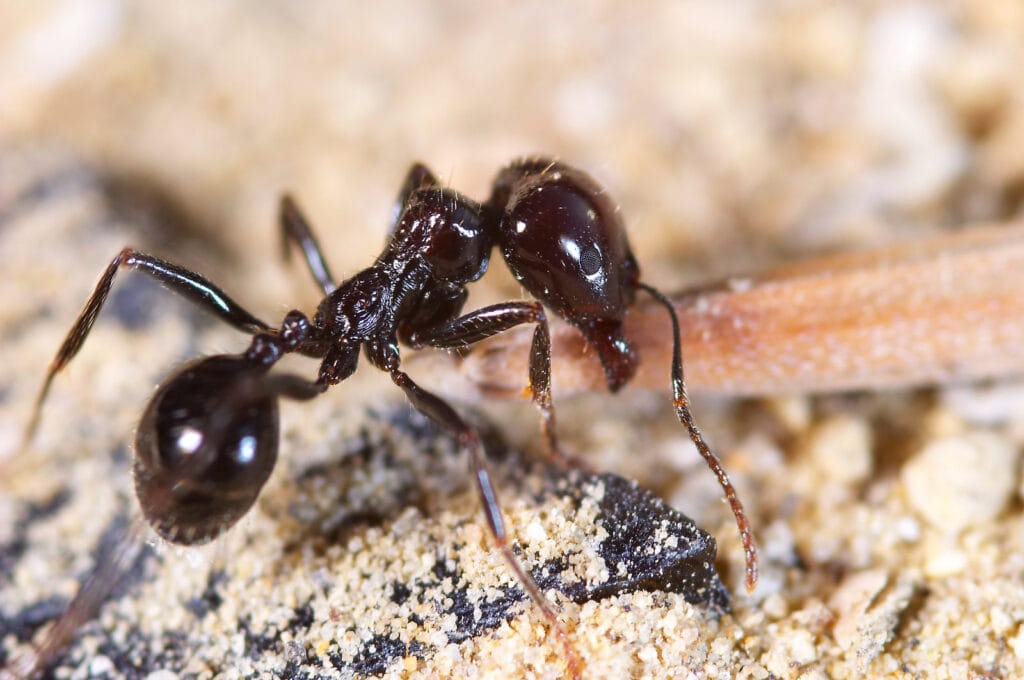
How Are Queen Ants Born?
Most ants are born from fertilized eggs. These fertilized eggs become infertile female worker ants. This means a majority of the ants in the colony cannot reproduce and only exist to work to aid in the colony’s development.
The other ants are born from fertilized eggs. This means they have a normal amount of chromosomes and are fertile. These eggs become male drones.
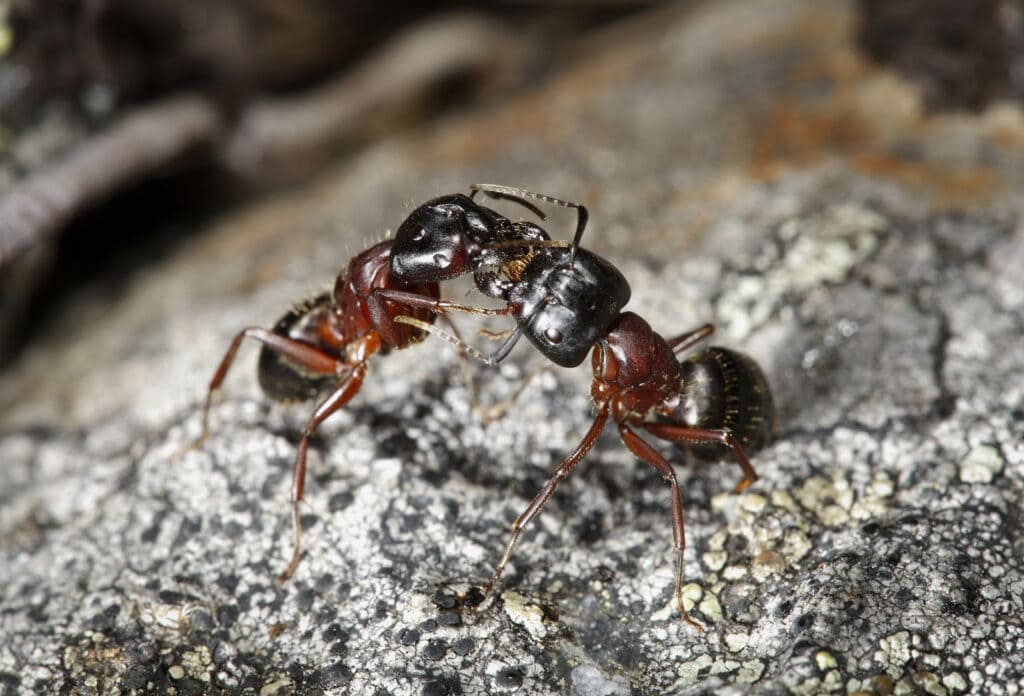
When conditions are right, a larva or pupa has the chance to develop into a queen.
This is done at the DNA level, where specific larvae have an increase of a single gene called insulin-like peptide 2 (ilp2).
Researchers found a couple of conditions that can trigger this biological shift.
Conditions that trigger a biological shift in ant larvae:
Food availability: If there is plenty of food, ants are more likely to develop into queens.
Temperature: Warmer temperatures also encourage workers to become queens.
Age: Younger ants are more likely to turn into queens than older ones, but older ants have made this biological shift. This usually happens when colonies are at risk of extinction.
Nutrition: A well-nourished ant is more likely to become a queen than one that isn’t. Many researchers believe that ants favor “queen-like” larvae and nourish them more.
Once a worker ant becomes a queen, she either stays in the colony (if the colony is polygyny or has satellite nests) or she will leave the colony to start her own nest.
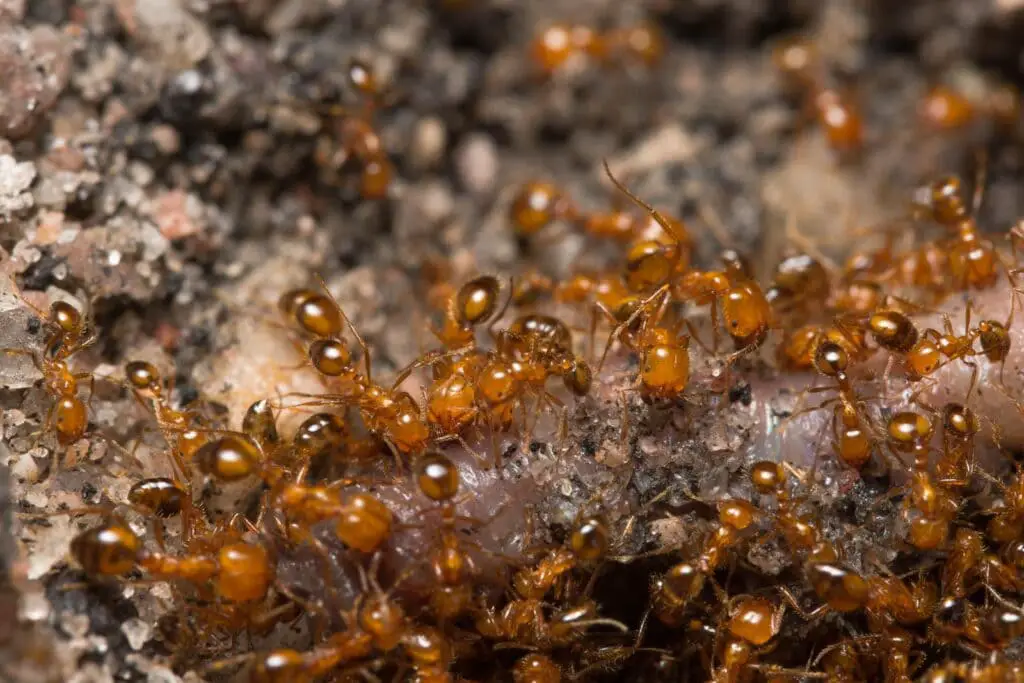
When a queen starts her own colony, she will go on a mating spree (called a nuptial flight) before finding an underground place to bury herself.
The queen then stores their sperm and uses it to fertilize her eggs for the rest of her life.
The male ants don’t share the same fate, as the males die soon after mating.
This storage of sperm allows the queen to control which eggs are fertilized and which aren’t.
She can choose to fertilize all of her eggs, some of them or none of them.
Fertilized eggs become female worker ants, while unfertilized eggs become male drones.
Early on, the queen ant will focus on colony growth – which means she will need worker ants.
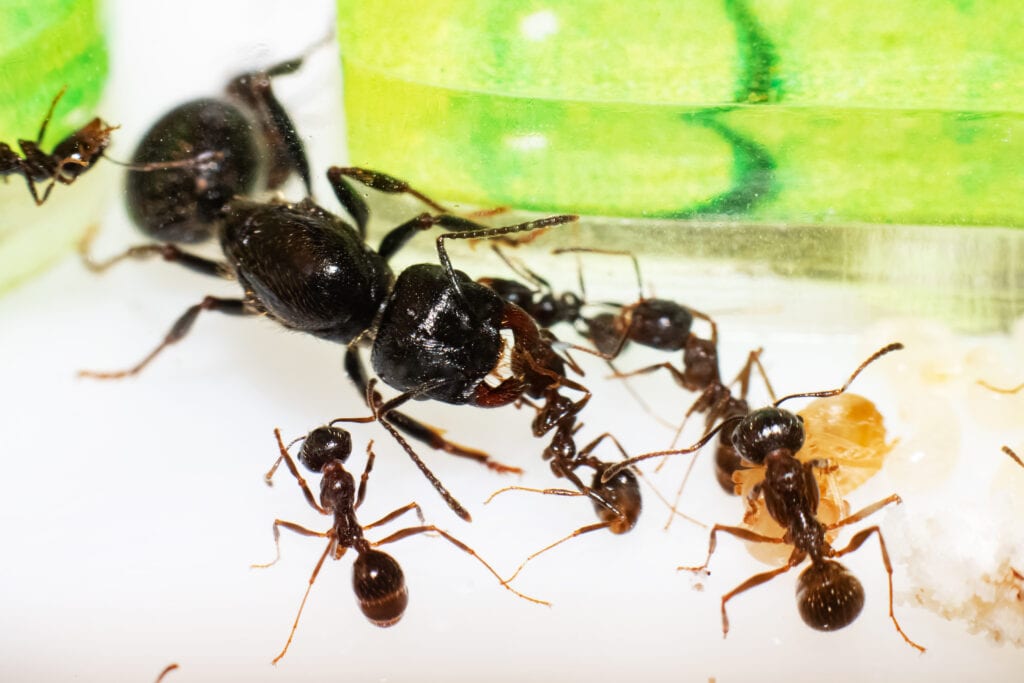
As the colony developed, she will start to produce queen and male drone ants.
And the cycle continues!
Reference: https://www.science.org/doi/10.1126/science.aar5723
How Often Are Queen Ants Born
The answer to this question largely depends on the species of ant.
Some species of ants will have a new queen every year, others might have multiple queens in a single colony, and some might have the same queen ant for over 30 years!
It’s most common to see an ant colony with a single queen.

Since queen ants can live for many years and can lay millions of eggs in their lifetime, they don’t need to be replaced as often as we’d think.
One study found that a single queen can lay up to 40,000 eggs in one day!
Reference: https://entnemdept.ufl.edu/walker/ufbir/chapters/chapter_34.shtml
How Big Are Queen Ants?
Again, this answer varies depending on the species of ant.
However, most queen ants are larger than the workers and drones. This is because they need to be able to store enough energy and nutrients to produce eggs.
Fully-claustral ants are usually a bit larger, as she and the early members of the colony live off the energy stored in her back muscles.
Semi-claustral ants forage for food, chasing down food to consume for her and the rest of the nest.
The size of the queen can also depend on the age of the ant.
Younger queens tend to be smaller than older queens.
One study found that queen ants can be of smaller size at around 4mm, too much larger, like the Dinoponera species at 1.5 inches.

Why Do Ants Need A Queen Ant?
Without a queen, an ant colony will eventually die out.
The queen is the only ant in the colony that can lay eggs. Without her, the colony is on a timeline. Most colonies can live upwards of a year without a queen ant, but most will die out in a couple of months.
How Long Does It Take For A Queen Ant To Be Born?
Queen ants do not take any longer to develop than any other type of ant. Remember, queen ants still come from larvae like other types of ants. It takes an ant about 6-8 weeks to develop from egg to adult, but is highly dependent on species.
One of the easiest ways to spot a queen ant is because she will have wings early on in development.
Be careful because drones will also have wings!
Once the queen mates, she will shed these one wing at a time.
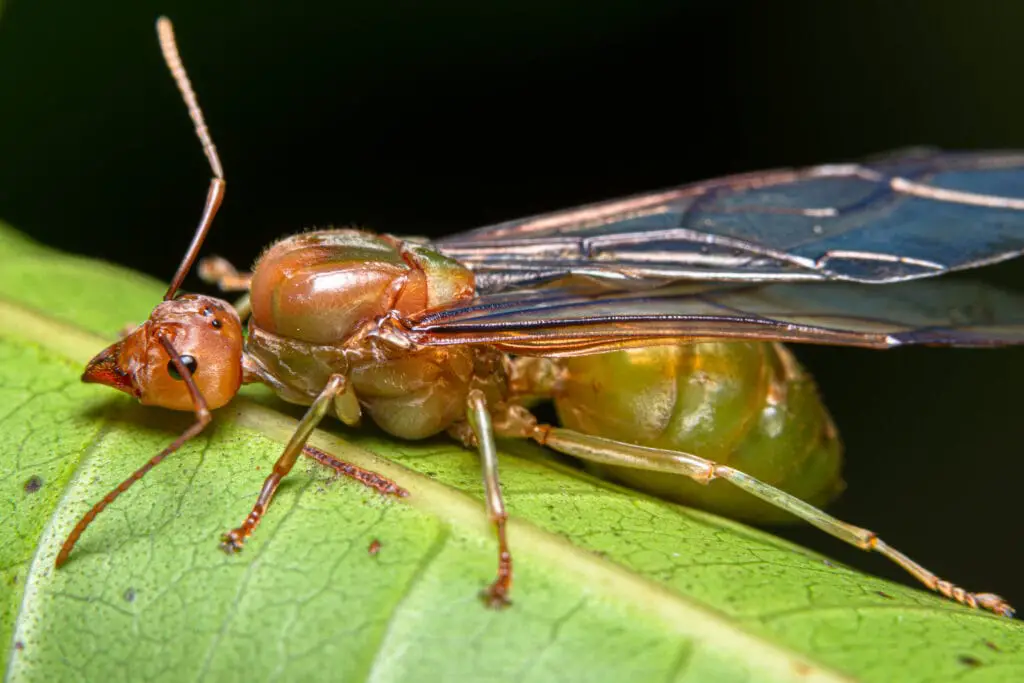
Do All Ants Colonies Have a Queen Ant?
All ant colonies have a queen…well, almost all of them.
A few species of ants do not have one queen and are led by multiple queens.
This is most common in some carpenter ants species.
In these species of ants, the “queens” will mate and then compete with each other to see who can lay the most eggs.

The female that lays the most eggs becomes the “leader” of the colony at a pheromone level, receiving the most nutrients and worker support.
While this might sound like a more democratic way of running an ant colony, it’s actually quite dangerous.
Colonies can progress towards war, as starving queens recruit workers to try to tip the balance back in their favor.
Having a single queen avoids these problems but leaves you at risk of that queen dying – and the colony shortly after.
Does the Queen Control the Colony?
The queen does not directly control the colony. While she is the colony’s center, she can only indirectly give orders to the workers or drones.
Since she can’t yell at them, she emits pheromones that influence the behavior of the other ants.

For example, a queen ant can produce a pheromone that tells worker ants to care for her larvae.
She can also produce pheromones that tell worker ants to go out and find the nest more food.
Ants are truly controlled by biology, reacting purely on instinct to allow the colony to survive and adhere to a caste like system.
Is The Queen Ant The Oldest Ant In The Colony?
Queen ants are not always the oldest ants in the colony! One study found that in some carpenter ant species, the oldest ant in the colony is usually a worker ant, as the queens of polygyny species are fragile.
The queen is usually the biggest and most fertile, but she isn’t always the oldest.
In fact, some queens only live for a few years, while their workers can live up to 10 years or more.
This is likely because the queen has a much more strenuous job than her workers.

She needs to be constantly laying eggs and caring for them, which takes a lot of time, energy, and nutrients.
On the other hand, worker ants focus on gathering food and caring for the colony.
This is less energy intensive, meaning they can live longer – if they can avoid danger.
